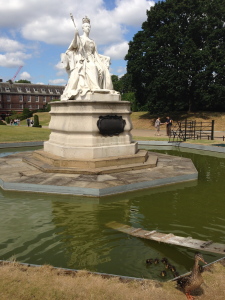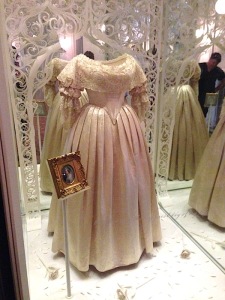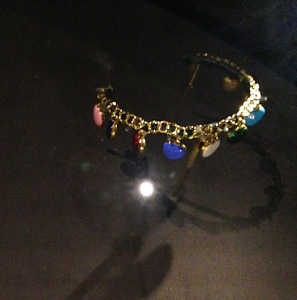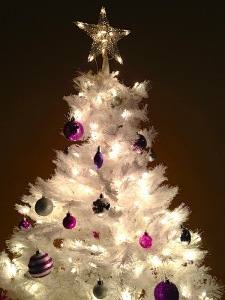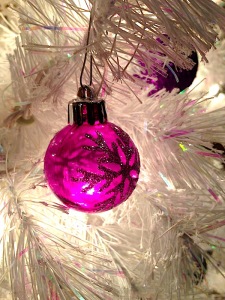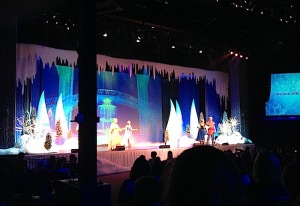My family visited England and France during my sophomore year of high school. It was my first trip outside the United States. We stayed in London and Paris. Both cities were beautiful, but I wound up preferring London, mostly because I knew more about English history. I explored the Tower of London, saw A Midsummer Night’s Dream at Shakespeare’s Globe, and even managed to go to Wimbledon. (My dad and I are longtime tennis fans.)
That was over a decade ago. In the meantime, I completed a degree in English Literature and wrote two novels set in a fantasy version of London. So when my grandmother approached me about going on a tour of the English countryside, I was quick to accept. There was still so much of England I hadn’t seen in person. (There still is, sadly!)
We began our tour in London, in July of 2014. We stayed in a hotel near Kensington Gardens, next to Hyde Park, and I had my first indelible moment there—one of those instants where time freezes because your mind is racing to commit it to memory. As I wandered beneath the towering trees, surrounded by every possible shade of green, I was flooded with a familiar sense of awe. I was in London again, a place with so much history (and so much foliage, compared to my desert home). I was following in the steps of Londoners from centuries ago, to say nothing of monarchs like Queen Victoria.
That’s when I came upon Kensington Palace, which houses an exhibit about Victoria. Somehow I had forgotten the palace was her childhood home (much to my writerly shame!). A statue of her even graces the walk toward the exhibit. It was carved from a model made by her daughter, Princess Louise.
In case it isn’t obvious, Victoria is my favorite monarch, from my favorite period in history. She’s complicated and fascinating (and so much more than the stereotypical image of a stuffy old widow in a black dress). The exhibit at Kensington Palace pays tribute to every stage of her life. I saw sketches she drew as a little girl, and wandered through the rooms where she grew up. I saw her wedding dress, along with many gifts from her beloved husband Prince Albert—including my favorite piece, a bracelet with heart-shaped charms representing each of their nine children.
Queen Victoria is special. She’s part of the history I love most: the oh-so-contradictory Victorians, a mixed-up crowd of moralists and reformers and inventors and imperialists. They’re gray in the extreme, yet so many of them viewed their lives in black and white—including Victoria herself. It was a thrill for me to experience even a sliver of that part of history in person, and a wonderful surprise for my first day in England.
Next came our journey into the English countryside… But that’s for another post!


